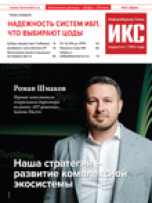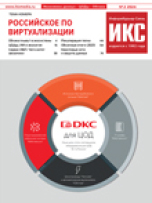| Рубрикатор |  |
 |
| Все новости |  |
World News |  |
 |
LTE goes mainstream, but beware of '4G pretenders'
| 10 февраля 2011 |
A year is a long time in mobile. 12 months ago commercial LTE deployments were restricted to just two countries. By mid-2010 rollouts remained few and far between, but by the end of the year the technology was well on its way to going mainstream.
Some of the world's largest operators in the most advance mobile markets have launched LTE services and many more intend to follow suit. New figures published earlier this week put the number of LTE subscribers worldwide at close to 7 million at the end of 2010 and analysts are optimistic on the technology's growth prospects.
LTE will take centre stage at Mobile World Congress in Barcelona next week, with operators announcing rollout plans, network equipment manufacturers sharing their experiences of the market, and device makers unveiling their latest LTE-compatible product offerings. With that in mind, it is an appropriate time to take a look back at global LTE developments since last year's show.
The latest figures published mid-January by the Global mobile Suppliers Association (GSA) revealed that 17 operators have launched LTE services in 12 countries, including Japan, the U.S., Hong Kong, and Germany. The industry body said 180 operators in 70 countries are now investing in the technology; as recently as last November those two figures stood at 156 and 64 respectively.
Verizon Wireless, Vodafone Germany, NTT DoCoMo, Hong Kong's CSL, and TeliaSonera are among the big names to have rolled out LTE. Verizon recently reported that it sold 65,000 LTE devices during the fourth quarter, despite only launching at the beginning of December. Meanwhile, although DoCoMo hasn't revealed the number of customers that have signed up to Xi (pronounced 'crossy') – its LTE service that also launched in December - it said during its recent fiscal third quarter results presentation it is aiming for 15 million Xi users by the end of fiscal 2014.
Analysts are also optimistic on LTE uptake.
IHS iSuppli said on Tuesday that global LTE subscribers reached 6.8 million in 2010 and are forecast to surge to 14.9 million by the end of this year. The research firm predicted that the number of LTE subscribers worldwide will hit 303.1 million in 2014.
Yet, wind the clock back 12 months and although LTE was the talk of the industry in 2010, by the time last year's Mobile World Congress took place just a single operator – Sweden's TeliaSonera – had rolled out commercial LTE services in the form of a mobile broadband offering in the Swedish capital Stockholm, and Norway's capital Oslo.
Since then TeliaSonera has extended LTE services into more Norwegian and Swedish cities; launched offerings in three additional markets – Finland, Denmark and Estonia; and currently has trials underway in Lithuania, Latvia and Uzbekistan.
Uzbekistan for a number of months was the centre of the LTE universe, when in August 2010 it became the first mobile market to boast two competing LTE providers, after UCell launched a high-speed broadband service to compete against Russian operator MTS's local arm, which had rolled out LTE a month earlier.
In September U.S. prepaid operator MetroPCS added a dose of glitz and glamour to the proceedings when it became the first U.S. player to roll out LTE, with Las Vegas becoming the first pin on its coverage map. The company now offers high-speed mobile broadband services in a further 12 cities including Boston, Dallas, Los Angeles, and San Francisco. MetroPCS was followed in early December by rival Verizon, which is rolling out nationwide LTE on the 700-MHz spectrum it acquired during the FCC's 2008 bandwidth auction.
But while operators are forging ahead with service rollouts, the industry as a whole is facing an unexpected LTE-related issue: marketing.
Following months of coverage throughout 2010 describing LTE and WiMAX as '4G' mobile technologies – to the chagrin of technologists and the telecoms press – the ITU in October announced it had selected two technologies that qualify as "true 4G" – the 3GPP-developed LTE-Advanced, and WirelessMAN-Advanced, or WiMAX 2 – developed by the IEEE.
However, far from clearing up the confusion, the industry body in December compounded it by backtracking on its earlier position and announcing that the term 4G "may also be applied to the forerunners of these technologies, LTE and WiMAX, and to other evolved 3G technologies." In short, any telco operating an HSPA network or faster can claim to be offering 4G services, and that is precisely what some players, particularly in the U.S., have been communicating to their customers ever since.
So as the industry heads to Barcelona for Mobile World Congress 2011, Total Telecom will follow with a mission of vital importance: to separate the true LTE players from the great 4G pretenders.
Источник: Total Telecom
Читайте также:
Ключевые задачи Минцифры Казахстана обсудили на заседании Общественного совета
Опубликован перечень поручений по итогам заседания Совета по стратегическому развитию и нацпроектам
Решения N3COM прошли тестирование на сети LTE ОАО «РЖД»
МТС начинает отключать старые сети 3G
Правительство Великобритании одобрило слияние Vodafone и Three

















Оставить свой комментарий:
Комментарии по материалу
Данный материал еще не комментировался.